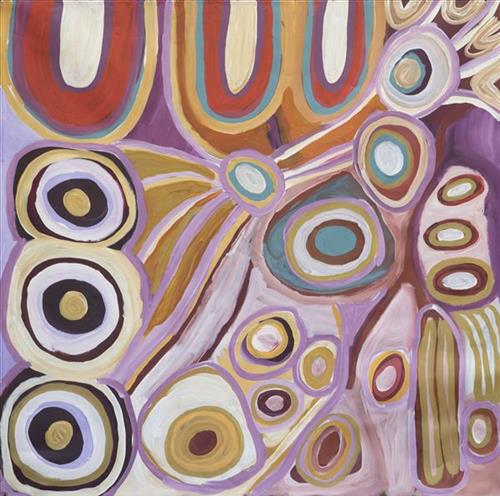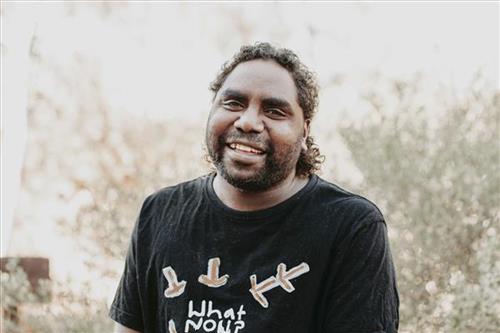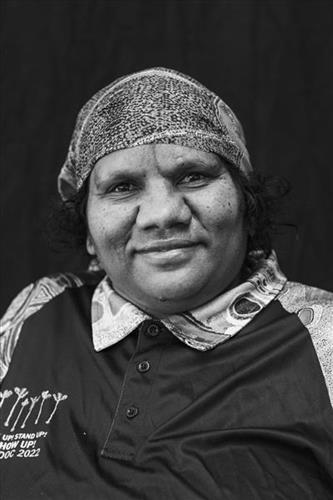111582326964
Kaalpakarti
“This painting is marlpa (companionship)- me and Anya painting this one together. We were talking together, painting together, laughing, joking. Me and Anya!”
– Corban Clause Williams
“That’s the first time I went to Kaalpa with Bamba [Corban]. I was feeling happy in Kaalpa with Bamba and everyone there. Me and Bamba painted that place, we drew it first then we painted it. Me and Corban like to paint together, that’s my brother.”
– Judith Anya Samson
Corban and Judith have together painted a visual depiction of Corban’s ancestral Country of Kaalpa. Senior Martu artists have often painted together where a story of mutual significance is conveyed, and in this way have produced many of the stunning, large scale collaborative works for which Martumili Artists are most well-known. Here the young artists have engaged in this established Martu practice of marlpa, or collaboration.
Kaalpa is a permanent water source located northeast of Kumpupirntily (Kumpupintily, Lake Disappointment). This site is a place of great cultural significance, and is also known for good hunting. Adjacent to the waterhole is a hill of the same name. The landscape around Kaalpa is parlkarra, bordered by tali (sandhills) stretching as far as Windy Corner, northeast and towards the border of Western Australia and the Northern Territory.
Kaalpa also features in the Minyipuru (Jakulyukulyu, Seven Sisters) Jukurrpa, a central creation narrative for Martu, Ngaanyatjarra, Pitjantjatjara and Yankunytjatjara people that is associated with the seasonal Pleiades star constellation. At Kaalpa the Minyipuru met a group of men; it was the first time either group had seen members of the opposite sex. The men tried to grab the women, but the Minyipuru chased them, hitting them with their digging sticks leaving them lying there as they continued travelling east.
The intersection of the Canning Stock Route with Kaalpa also made this a site of early contact with Europeans for many Martu then living a pujiman life in the desert. Following the route’s construction, Martu encountered Europeans and other Martu working as cattle drovers as they would travel up and down the Stock Route from water source to water source.





